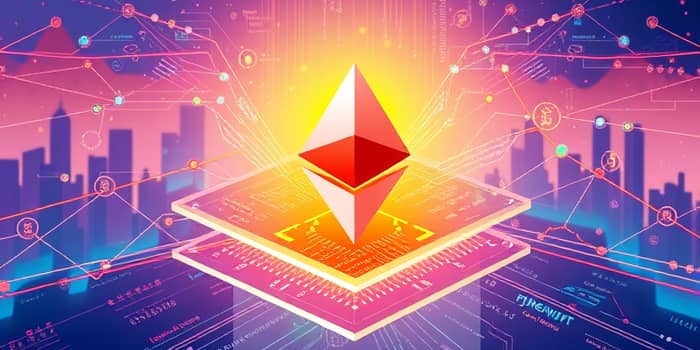
Ethereum’s meteoric rise as the foundation for decentralized applications has been accompanied by growing pains. As millions of users flock to DeFi, NFTs, and gaming, the network has struggled under high gas fees and slow transactions, threatening its vision of widespread accessibility and innovation.
Layer 2 (L2) solutions have emerged as a powerful answer, unlocking performance gains and cost savings that promise to reinvigorate Ethereum’s ecosystem. By moving most activity off the base layer, these technologies preserve security while delivering fast, low-cost user experiences at scale.
Launched in 2015, Ethereum set a new standard for programmable blockchains. However, its design—prioritizing decentralization and security—means it can process only around 15–30 transactions per second. During peak periods, users face skyrocketing fees and sluggish confirmations, undermining mainstream adoption.
Without a path to higher throughput, many promising dApps have remained niche experiments. This bottleneck also places stress on L1 nodes, raising questions about long-term network health as on-chain demand continues to soar.
Layer 2 refers to protocols built on top of Ethereum’s base layer that handle transaction execution off-chain. They batch or validate transactions independently and anchor final states back to L1, reducing congestion without sacrificing the mainnet’s cryptographic guarantees.
Major L2 categories include rollups, sidechains, state channels, Plasma, and Validium. Each employs unique trade-offs between speed, cost, and security, but collectively they have demonstrated the ability to scale Ethereum by orders of magnitude.
Since the March 2024 Dencun upgrade, which optimized L1 data storage, gas costs fell to a five-year low of $0.16 per transaction in April 2025. Much of this relief stems from offloading activity to L2 networks, where fees are often mere pennies.
Leading L2s now collectively secure over $42 billion secured on L2, processing thousands of transactions per second compared to Ethereum L1’s transactions per second (TPS) cap of 30. This dramatic uplift has enabled new use cases—from mass-market NFT drops to real-time DeFi arbitrage—that were previously cost-prohibitive.
Layer 2 solutions deliver several transformative advantages that drive ecosystem growth and user satisfaction.
As of 2025, the next frontiers in Layer 2 evolution are becoming clear. Projects are focusing on decentralized sequencer networks to avoid single points of control, while standardizing cross-chain messaging to knit fragmented L2s into a cohesive whole.
Research into quantum resistance for future security is underway, aiming to safeguard the network against next-generation threats. At the same time, some experts warn of potential downsides, such as shifting revenue away from L1 or creating power imbalances among dominant L2 operators.
Looking forward, Ethereum’s roadmap positions L1 as a robust settlement layer, with L2 networks executing the lion’s share of transactions. This division of labor will unlock an environment where blockchain applications can flourish without compromise.
The rapid maturation of Layer 2 solutions heralds a new era for Ethereum—one where transactions are ubiquitously cheap, fast, and reliable. Entrepreneurs can deploy novel dApps, developers can experiment without prohibitive costs, and users worldwide can access services that were once beyond reach.
Ultimately, Layer 2 scaling is more than a technical upgrade; it’s a catalyst for global financial inclusion and creativity. By embracing these innovations, Ethereum stands poised to realize its founding promise: a decentralized platform where anyone, anywhere, can participate in the digital economy without barriers.
As Layer 2 networks continue to advance, the dream of a seamless, scalable, and secure blockchain infrastructure draws ever closer—opening the door to unprecedented levels of collaboration, innovation, and prosperity.
References













